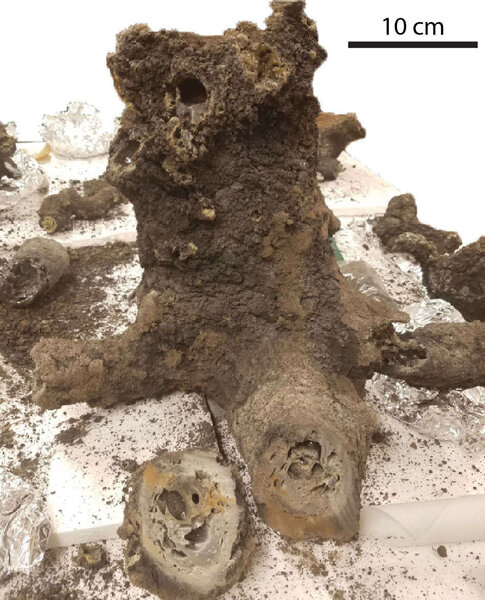Create a free profile to get unlimited access to exclusive videos, sweepstakes, and more!
It’s alive! Microbes on early Earth could have been jolted to life by lightning

While it didn’t exactly happen like that famous scene where Doctor Frankenstein pulls the lever and the monstrosity he created is suddenly living and breathing, how some of the first life-forms on Earth could have emerged is positively electrifying.
Primordial microbes weren’t zapped into being out of lifeless cadaver parts like the thing Victor Frankenstein was trying to resurrect in his lab. However, new research suggests intense and frequent lightning strikes on nascent Earth could have released phosphorus that was trapped in rocks. That created a monster. Phosphorus reacted with other elements and molecules to form the organics that life depends on, from lipids to the nucleosides and nucleotides that make up DNA and RNA. Without it, we wouldn’t be alive — or undead.
Somewhere around 4 billion years ago, lightning would strike Earth billions of times each year compared to the hundreds of millions of times it hits the planet now.
“When the large Mars-sized planetesimal slammed into Earth, creating the moon, it also released a significant amount of gases from inside the Earth. Those gases, including a large amount of CO2, would have been trapped in Earth's atmosphere, elevating lightning rates,” researcher Benjamin Hess, who led a study recently published in Nature Communications, tells SYFY WIRE.
There are conflicting theories about how the Moon was created, but the most prevalent one is that it broke off from something roughly the size of Mars when it smashed its face into Earth. Carbon dioxide is a greenhouse gas. The more CO2 is in the atmosphere, the more heat it traps. Higher temperatures across the planet bring on more thunderstorms. The reason we don’t see as many today is because carbonate rocks formed and took much of that CO2 out of the atmosphere, but they were much more powerful in the early days of Earth’s existence because such an enormous amount of CO2 had just been unleashed from the depths of the planet.
When thunderstorms strike, so does lightning. The forecast would have been especially turbulent for tropical areas that were already in the warmer zones of the planet. Some tropical islands that were volcanically active triggered even more lightning because the lava plumes from an eruption can generate it. Lightning packs enough energy to melt minerals and destroy the chemical bonds that keep them together, which is how it released phosphorus from the rocks it was lurking in. When melted minerals cooled down, the elements within form new minerals. Phosphorus had a much easier time bonding with iron after that.
When phosphorus and iron were released from their previous bonds and joined forces, they created schreibersite, or (Ni,Fe)3P, which is often found in rocks known as fulgurites (above). “The phosphorus needs to be dissolved in water so that it can form the molecules needed for life. If the phosphorus is bound as phosphate in minerals, then there is simply no way for it to form molecules like nucleotides or phospholipids,” Hess said. “But if a mineral, like schreibersite, readily dissolves in water, creating activated hydrous phosphate molecules, then it's possible for organic reactions to occur. Phosphorus derived from schreibersite has been shown in experimental work to react with nucleoside molecules to form nucleotides.”
Nobody knows what exactly jolted life into being, but the nucleotides that come out of reactive phosphorus bonding with nucleosides created parts of the genetic code found in everything that lives on Earth. Phosphorus will also bond with the lipid molecules that form the cell membranes, the barrier between a cell’s innards and its outer surroundings. Lipids control which proteins accumulate or scatter in cell membranes. They are able to tranduce signals—converting any type of signal into an electrical signal or vice versa. They also make cell reproduction possible.
Now that Hess has and his team have unearthed part of what could have sparked the dawn of life, they want to know more. “We’re looking to collect fulgurites that formed on rock-types that are thought to have been dominant on early Earth, such as basaltic rocks from ocean islands like Hawaii. By studying the state of phosphorus in basaltic rocks, we should be able to give further support to our hypothesis,” he said.
Talk about being struck by lightning.



























